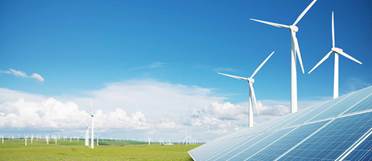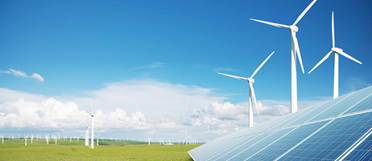Description

Disclaimer: Copyright infringement not intended.
Context
- India’s financial sector is highly exposed to the risks of the economy as it is transitioning from being largely dependent on fossil fuel to clean energy—a Study published in the Global Environmental Change journal.
Findings
- An analysis of individual loans and bonds was done. It was found that 60% of lending to the mining sector was for oil and gas extraction, while one-fifth of the manufacturing sector debt is for petroleum refining and related industries.
- Electricity production – by far the largest source of carbon emissions – accounted for 5.2% of outstanding credit.
- Concern- Only 17.5% of lending is to renewables.
- Moreover, there is a shortage of experts in India’s financial institutions who have the expertise to appropriately advise the institutions on transition from fossil fuel to renewables.
- Not even half of the 154 finance professionals surveyed were familiar with environmental issues, including climate change mitigation and adaption, greenhouse gas emissions, or transition risks.
- Only four of the ten major financial institutions surveyed collect information on environmental, social, and governance (ESG) risks. Also, these firms do not systematically incorporate that data into financial planning.
.jpeg)
India’s Climate Commitments and Financial Obstacles
- At the 26th Conference of Parties (COP-26) held in Glasgow in 2021, India pledged to achieve net-zero emissions by 2070.
- India has also announced plans to source half of its electricity needs from non-fossil fuel sources by 2030. However, it has also maintained that it needs financing to the order of at least a trillion dollars to meet these commitments.
- The financial decisions of Indian banks and institutional investors are locking the country into a more polluting, more expensive energy supply. For example, we find that only 17.5% of bank lending to the power sector has been to pure-play renewables.
- Consequently, India has much higher electricity from carbon-sources than the world average, despite its vast potential for cheap solar, wind and small hydropower.
- High-carbon industries -- power generation, chemicals, iron and steel, and aviation -- account for 10% of outstanding debt to Indian financial institutions. However, these industries are also heavily indebted, and therefore have less financial capacity to respond to shocks and stresses.
- Mapping India's policy commitments against these lending and investment patterns reveals that India's financial sectoris heavily exposed to potential transition risks.
Silver Lining
- A transition to clean energy is a huge economic opportunity. India is particularly well placed to become a global leader in renewable batteries and green hydrogen. These and other low-carbon technologies could create a market worth up to $80 billion in India by 2030.
- Support from the international community is essential to help shift India’s development onto a low-carbon path. To reach net zero emissions by 2070, the International Energy Agency estimates that $160 billion per year is needed, on average, across India’s energy economy between now and 2030. That’s three times today’s investment levels. Therefore, access to low-cost long-term capital is key to achieve net zero.
- India already has numerous policy measures in place that – if fully implemented – could address some of these challenges by accelerating the shift to cleaner and more efficient technologies. Subsidies for petrol and diesel were removed in the early 2010s, and subsidies for electric vehicles were introduced in 2019.
- India’s robust energy efficiency programme has been successful in reducing energy use and emissions from buildings, transport and major industries. Government efforts to provide millions of households with fuel gas for cooking and heating are enabling a steady transition away from the use of traditional biomass such as burning wood.
- India is also laying the groundwork to scale up important emerging technologies such as hydrogen, battery storage, and low-carbon steel, cement and fertilisers.
- India has overachieved its commitment made at COP 21- Paris Summit by already meeting 40% of its power capacity from non-fossil fuels- almost nine years ahead of its commitment and the share of solar and wind in India’s energy mix have grown phenomenally.
- The country is also one of the world’s largest producers of modern bioenergy and has big ambitions to scale up its use across the economy.
Closing Thoughts and Path Forward
- Shifting resources towards renewables would deliver huge benefits: cheaper electricity, cleaner air and fewer emissions.
- Financial institutions will need to ramp up their capacities The other side of risks is the tremendous opportunity to move finance towards sustainable assets and activities.
- Robust, internationally interoperable taxonomies play a huge role in guiding finance credibly. The Ministry of Finance's draft taxonomy developed in 2021 is awaiting its release. It would add a great boost to realise the huge potential for green finance in India.
- Despite new short- and medium-term challenges for India’s clean energy and mobility transitions, India’s public and private sector leaders must continue to invest in a long-term clean energy future.

Some Examples:
Opportunities in the Transport Sector
- Opportunities in the transport sector include making public transport safe, enhancing and expanding nonmotorized transport infrastructure, reducing vehicle kilometres travelled through work-from-home where possible, supporting national strategies to adopt electric vehicles in the freight and passenger segments, and making India an automotive export hub.
Opportunities in the Power Sector
- In the power sector, opportunities include improving the electricity distribution business and its operations, enabling renewables and distributed energy resources, and promoting energy resilience and local manufacturing of renewable energy and energy storage technologies.
- Doing these will require a commitment to implement existing plans and initiatives. These include flagship efforts like Prime Minister Narendra Modi’s commitment to achieve 500 GW of installed renewable energy capacity by 2028, the Department of Heavy Industry’s Rs 10,000 crore outlay to electrify over 15 lakh EVs under the FAME II scheme, and the National Mission on Transformative Mobility and Battery Storage to develop a domestic battery manufacturing industry.
- The private sector and civil society can help deliver against these ambitious national goals and further the ambitions of the ecosystem with new technologies, business models, and ideas. For example, studies suggest that a circular economy development path—with a focus on resource efficiency, through the elimination of waste and continual use of materials—could build on India’s clean energy agenda and create annual benefits of Rs 14 lakh crore (US$218 billion) in 2030 and Rs 40 lakh crore (US$624 billion) in 2050 compared to the nation’s current development path.
- As policymakers and business leaders discuss and identify ways to drive short-term recovery and long-term resilience, they can leverage investments in least-cost energy solutions, resilient and secure energy systems, efficiency and competitiveness, and social and environmental equity for a better, greener future for India.
- Financiers, Regulators, and Policymakers in emerging and developing economies should be acting swiftly to ensure an orderly transition to Net-Zero.
https://www.thehindu.com/sci-tech/energy-and-environment/study-warns-of-risk-to-indian-financial-institutions-from-transition-to-clean-energy-economy/article66419679.ece















